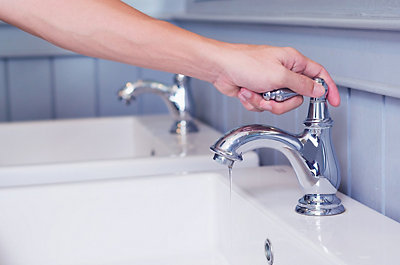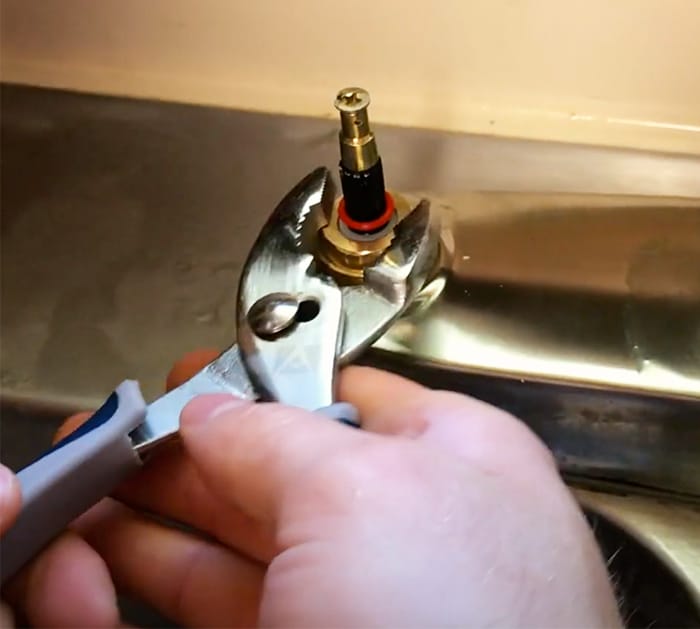Understanding the Importance of Correcting a Broken Faucet
CallThis article in the next paragraphs involving Why It's Important to Fix Leaky Faucets is absolutely stimulating. Check it out yourself and decide what you think of it.

Leaking taps could look like a small hassle, but their impact goes beyond just the nuisance of the sound. From wasting water to incurring unnecessary monetary costs and health and wellness risks, neglecting a leaking faucet can lead to different repercussions. In this short article, we'll delve into why it's essential to resolve this common household problem quickly and efficiently.
Wastefulness of Water
Ecological Impact
Leaking faucets add significantly to water wastefulness. According to the Epa (EPA), a solitary faucet dripping at one drip per secondly can lose greater than 3,000 gallons of water each year. This not just strains water sources yet additionally influences communities and wildlife dependent on them.
Step-by-Step Guide to Taking Care Of a Dripping Tap
Devices Needed
Prior to trying to take care of a leaking tap, collect the required tools, including an adjustable wrench, screwdrivers, replacement components (such as washing machines or cartridges), and plumber's tape.
Common Tap Issues and Their Solutions
Determine the sort of faucet and the particular concern causing the drip. Typical problems consist of damaged washing machines, corroded shutoff seats, or faulty O-rings. Refer to producer instructions or on-line tutorials for detailed advice on fixings.
Financial Prices
Enhanced Water Bills
Past the ecological impact, trickling taps can inflate water bills significantly. The gathered waste over time equates right into higher utility expenses, which can have been avoided with prompt repairs.
Possible Home Damage
Moreover, long term trickling can cause harm to fixtures and surface areas surrounding the tap. Water buildup can cause discoloration, deterioration, and even architectural problems if left unattended, causing additional fixing expenses.
Wellness Issues
Mold And Mildew and Mildew Growth
The consistent presence of moisture from a trickling faucet develops a perfect environment for mold and mildew and mold growth. These fungis not just endanger indoor air high quality however likewise position health dangers, specifically for individuals with breathing conditions or allergic reactions.
Waterborne Diseases
Stagnant water in dripping faucets can come to be a breeding place for bacteria and various other pathogens, increasing the danger of waterborne conditions. Impurities such as Legionella germs flourish in stationary water, possibly resulting in severe diseases when ingested or breathed in.
Do it yourself vs. Specialist Fixing
Benefits and drawbacks of Do It Yourself Repair
While some may attempt to deal with a trickling tap themselves, do it yourself fixings come with their very own set of difficulties. Without proper understanding and tools, DIY attempts can exacerbate the issue or bring about incomplete repairs, prolonging the problem.
Benefits of Working With a Specialist Plumber
Employing a professional plumber guarantees that the underlying source of the leaking faucet is dealt with effectively. Plumbing technicians have the proficiency and devices to identify and repair faucet issues efficiently, saving time and lessening the danger of more damages.
Environmental Duty
Private Contribution to Conservation
Taking duty for taking care of leaking taps aligns with wider initiatives toward water preservation and environmental sustainability. Every individual's activities jointly make a significant influence on preserving precious resources.
Sustainable Living Practices
By focusing on timely repairs and adopting water-saving practices, people add to lasting living methods that profit both present and future generations.
Safety nets
Routine Upkeep Tips
To prevent leaking faucets, do routine maintenance such as cleaning aerators, checking for leakages, and changing damaged components quickly. Furthermore, take into consideration setting up water-saving devices or updating to much more reliable fixtures.
Significance of Prompt Repair Works
Dealing with dripping faucets as quickly as they're observed stops more water wastefulness and potential damage, eventually saving both water and cash in the long run.
Influence On Residential Or Commercial Property Worth
Understanding of Well-Maintained Home
Maintaining a home in good condition, including resolving upkeep concerns like trickling faucets, improves its perceived value and worth amongst possible purchasers or renters.
Influence on Resale Worth
Properties with well-kept plumbing fixtures, consisting of faucets, command greater resale worths in the real estate market. Attending to trickling taps can contribute to a favorable perception throughout residential or commercial property assessments and settlements.
Final thought
Dealing with a leaking tap surpasses mere ease; it's an important action towards conserving water, lowering monetary prices, and guarding health and wellness and building. Whether through DIY repairs or professional assistance, taking action to fix leaking taps is a tiny yet impactful method to advertise responsible stewardship of resources and contribute to a much healthier, much more lasting future.
How to Fix a Dripping or Leaky Faucet
A leaking faucet is one of the most common problems that homeowners encounter, but it being commonplace doesn’t make it any less annoying. The constant drip drip drip of a leaking bathtub faucet, showerhead, or sink tap can disturb your home’s serenity. Left neglected, a dripping faucet can also result in higher water bills and discoloration or mold growth in your sink or plumbing fixtures.
Fortunately, you don’t have to be a trained plumber to know how to stop a dripping faucet. With some basic tools, replacement parts, and a little patience, leaky faucet repair is a breeze. In this article, we’ll explain what causes dripping faucets and how you can fix them.
What Causes a Leaking Faucet?
Kitchen and bathroom faucets come in all manner of designs, but most involve some combination of valves, O-rings, seals, and washers. The O-ring is usually the weakest link, but any one of these pieces can wear down over time. Heat, moisture, temperature fluctuations, minerals, mold, and movement can contribute to warping and corrosion, breaking the watertight seal. This just comes with the territory of being a homeowner. Everything is always subject to wear and tear, and some component parts of your appliances and fixtures need to be replaced on occasion. At least replacement O-rings are cheap!
More rarely, dripping faucets can be a symptom of excessively high water pressure. Were this the case in your home, you would probably notice that the leak is not isolated to one faucet. Water pressure issues are harder to resolve on your own. We recommend contacting a professional plumber if you suspect your water pressure is too high.
How to Fix a Dripping Faucet
Pipe wrench or monkey wrench Allen wrench set Screwdrivers Old towel or rag Shut off the water.
Before you do anything, you need to turn off the water to keep from drenching your kitchen or bathroom. You should find a valve under the sink and against the wall. Once you’ve turned this valve, try turning the faucet on to confirm that the water source has been cut off.
If you can’t locate your local valve for the faucet you’re working on, you can always shut off the water to the house at the main valve. Of course, this will prohibit anyone from using the sinks, showers, or toilets while you’re working on the faucet that’s giving you trouble.
Plug or block the drain.
You’ll be disassembling the faucet and removing some small bits of hardware. Plug the drain with a stopper or rag to avoid the possibility of a small screw falling into your P-trap.
Take apart the faucet assembly.
There are several varieties of kitchen and bathroom faucets, each with its own manner of assembly. For detailed instructions on how to disassemble your faucet, you can refer to the fixture’s manual or contact the manufacturer. If you know whether you have a ball, disc, cartridge, or compression faucet, you can find detailed schematics online.
In general, you need to begin by removing the faucet handles. You might notice a small screw that you’ll need to remove with a screwdriver or Allen wrench. If you don’t see any visible securing hardware, it’s likely hidden under a decorative cap that can be unscrewed or popped off with flathead screwdriver.
Remove each piece methodically, consulting a schematic when necessary. Take notes or arrange the pieces in such a way to make it easier to correctly reassemble the faucet later.
Remove the cartridge.
Once you’ve removed the handles and securing hardware, you should be able to remove the valve cartridge or stem. Some cartridges will slide right out. Other faucet models will require you to loosen a nut with a pipe wrench before you can remove the valve stem.
Examine the exposed hardware.
With the cartridge or stem removed, inspect the component parts. Check the rubber O-rings for wear and tear. Also examine the seat washer for corrosion or other damage. These pieces are usually the responsible parties for a dripping faucet, but it’s worth inspecting the other component parts while you have the faucet disassembled.
Find replacement parts.
Once you’ve identified which faucet component has failed, find an identical replacement. Your local hardware store should have O-rings, seat washers, and other standard components in stock. If you have a luxury or uncommon faucet, you may have to contact the manufacturer for a replacement part.
It’s a good idea to take your old parts with you to the hardware store so you can compare them with the store’s inventory and be sure you’re purchasing the correct replacement.
Reassemble the faucet.
With your new parts in hand, reconstruct the faucet and handles. Don’t be tempted to overtighten screws or nuts. You might think this could create a better seal, but it can instead damage or bend a delicate part of the assembly and create a new problem for you.
Turn on the water and test the faucet.
The only thing left to do is test your work. Unplug the sink, turn the water back on, and try the faucet. Congratulate yourself on a job well done!
https://www.libertyhomeguard.com/how-to-fix-a-dripping-or-leaky-faucet/

Do you really like reading up on 4 Common Reasons for a Leaky Faucet? Place a remark directly below. We'd be happy to know your ideas about this posting. Hoping that you visit us again soon. If you enjoyed reading our page plz don't forget to pass it around. Thanks a lot for your time. Revisit us soon.